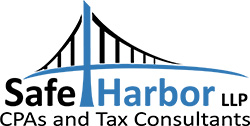Here’s an excerpt from our May, 2013, client newsletter. As a top San Francisco CPA Firm, we strive to keep our clients up-to-date about all sorts of tax and financial issues. No issue is more important than retirement. With California taxes as high as they are, it’s incredibly important to squeeze every possible tax savings so that you can retire in this beautiful state. Here’s some new information on how 401(k) plans work –
401(k) vs. Roth 401(k) Plan Issues

- Traditional 401(k)s are funded largely with pretax dollars. Withdrawals are fully or mostly subject to income tax.
- Roth 401(k)s are funded with after-tax dollars. Withdrawals are completely tax-free after you have had the account for 5 years and reach age 59Vz.
New opportunity. Under the new tax law (see the CPA Client Bulletin for April 2013), you can convert your traditional 401(k) balance to a Roth 401(k). You can do so at any time, as long as your employer offers a Roth 401(k) and the plan documents permit such conversions. The same rules apply for conversions to employer sponsored Roth accounts if you participate in 403(b) or 457(b) plans. Moreover, the federal government’s Savings Plan for federal employees may decide to permit in-plan conversions to its Roth version. The tax code has allowed such conversions since 2010, but only for people eligible for distributions. That meant conversions generally were available only when a participant left the company, reached 59Vz, became disabled, died, or when the plan terminated without a similar substitute in place. The new tax law permits current participants to convert without having to meet any of those requirements.
Examples of 401(k) Scenarios
Example 1: Arlene Baxter, age 32, works for ABC Corp., where she participates in a traditional 401(k) plan. ABC also offers a Roth 401(k); in-plan conversions are allowed. Arlene, who has $80,000 in her 401(k), can convert any or all of that $80,000 from her traditional 401(k) to a Roth 401(k). As mentioned, Arlene creates an opportunity to receive tax-free cash flow in the future when she moves money into the Roth version. Once she reaches 59Vz, Arlene will be beyond the 5-year mark so she can withdraw as much as she’d like without owing tax. Arlene will pay a price for this future income stream. She’ll owe income tax on all the pretax money she moves from her traditional 401(k) to the Roth 401(k). Assuming Arlene’s traditional 401(k) is all pretax, she’ll add $80,000 to her taxable income for 2013, if she executes a full conversion this year. Balancing the brackets Perhaps most important, you should compare your present tax rate to your estimated future tax rate. Ideally, you’ll pay tax now at a relatively low tax rate, then take tax-free withdrawals at a time when your tax rate would have been much higher. The catch, of course, is that converting a traditional 401(k) to a Roth 401(k) will increase your income and may push you into a higher tax bracket in the year of the conversion.
Example2: Suppose Arlene Baxter is single and expects her taxable income this year, after deductions, to be around $75,000. In 2013, such income puts Arlene in the 25% federal tax bracket, which goes up to $87,850 of taxable income. If Arlene implements a full $80,000 conversion, she’ll move into the 28% bracket for the year and owe the higher rate on most of her conversion. Arlene may not want to pay that much in tax, considering she has no idea of what her income or the tax rates will be when she’s age 59 liz. Therefore, Arlene decides to convert only $10,000 of her traditional 401(k) to a Roth 401(k) in 2013. She will stay in the 25% bracket, so the conversion will increase her tax bill by only $2,500 for the year: 25% of $10,000. Arlene is confident that she will be able to pay that tax without having to borrow from her 401(k) or tap her IRA. You may decide that taking a series of partial conversions each year is a prudent way to build a tax-free retirement fund. However, the rules on Roth 401(k) plans are complex. For instance, such conversions are irrevocable, so they lack the flexibility of a Roth IRA conversion, which can be reversed. Our office can go over the outlook for an in-plan Roth conversion in your particular circumstances.
San Francisco Retirement Planning
Confused? Don’t be. Our experts at Safe Harbor LLP can help guide you and create a tax strategy to minimize taxes today, tomorrow, and even in the future for your heirs and dependents. Reach out to us for a free phone consultation to discuss tax planning needs. We work with San Francisco Bay Area residents and businesses to devise efficient tax strategies, including retirement planning and estate planning issues. Whether you live in San Francisco or just have a connection to the San Francisco Bay Area or California as a whole, we can help!
IRS Circular 230 Notice
The Internal Revenue Service requires Safe Harbor LLP to inform the reader that any tax advice contained in this correspondence cannot be used for the purpose of avoiding penalties under the Internal Revenue Code or for promoting, marketing or recommending to another party any transaction or matter addressed.
About Safe Harbor LLP – a Professional CPA Firm in San Francisco
Safe Harbor LLP is a CPA firm that specializes in accounting and tax services for individuals and businesses throughout the San Francisco Bay Area and greater California. Safe Harbor CPAs helps both individuals and businesses with tax preparation, IRS audit defense, and audited financial statements. The firm prides itself on friendly yet professional service and utilizes state-of-the-art Internet technology to provide quality customer service.
Safe Harbor LLP
https://www.safeharborcpa.com
Tel. 415.742.4249

